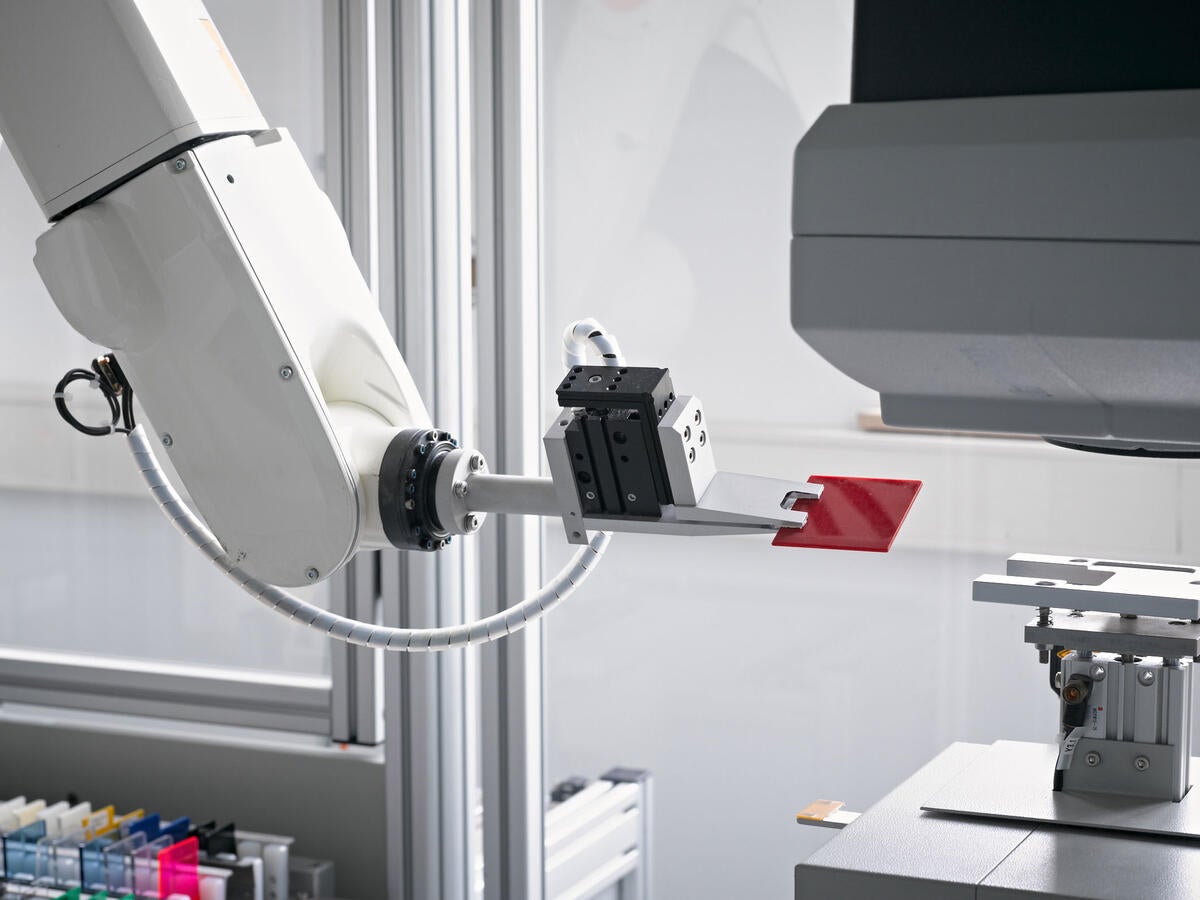
UL Materials Testing and Certification (English)
We have the solutions to test the optical properties of your plastic material, such as gloss, color, haze and more.

This test method is used to determine the gloss properties of a surface. It helps to determine impact of external influences on the visual appearance of a component. These stresses can include processing, after-treatment, light aging, weathering and temperature aging. The respective gloss level is measured using a reflectometer.
Measuring geometry:
20°, 60° and 85°
| Test specimen | Optical sample sheet |
|---|---|
| Basic dimensions | 80 mm x 80 mm x d |
The dimensions mentioned refer to test specimens manufactured in our laboratory. All common specimen geometries with a flat surface can be tested.
Standards for gloss index
ISO 2813, ASTM D523, or equivalent standards
Color measurements are used to assess color changes induced by various stresses. The following characteristics of a specimen are measured or calculated in an automatic spectral photometer with the help of the CIELAB table system:
| Test specimen | Optical sample sheet |
|---|---|
| Basic dimensions | 60 mm x 40 mm x d |
The dimensions mentioned refer to test specimens manufactured in our laboratory. All common specimen geometries with a flat surface can be tested.
Standards for color measurement
DIN 5033, ASTM E179, ASTM E313, ISO 13468-2, or equivalent standards
In material research it is sometimes necessary to assess test specimens with a high absorption capacity such as laser protection lenses, optical filters and polarisation materials. Most specimens of this kind have to be investigated across the visible electromagnetic spectrum – from UV through VIS to NIR.
This test method for transparent products is used to determine the translucency of a material. Following various load tests such as processing, after-treatment, light aging, weathering and temperature aging, an automatic optical measuring system evaluates all important criteria that determine the transparency of the test specimen.
Criteria: Total transmission, Haze, and Clarity
Standards for haze measurement
ASTM D1003 or equivalent standards
By means of the gray scale determination the optical surface change is identified after different loads. These stresses can include processing, after-treatment, light aging, weathering and temperature aging. The difference in color of a specimen is compared with the gray scale sections. The tested specimen is given the number closest to the color fastness level on the gray scale.
| Test specimen | Sample sheet |
|---|---|
| Basic dimensions | 60 mm x 40 mm x d |
The dimensions mentioned refer to test specimens manufactured in our laboratory. All common specimen geometries with a flat surface can be tested.
Standards for gray scale determination
ISO 105-A02 or equivalent standards

UL Materials Testing and Certification (English)
Have questions, need specifics? Let's get this conversation started.